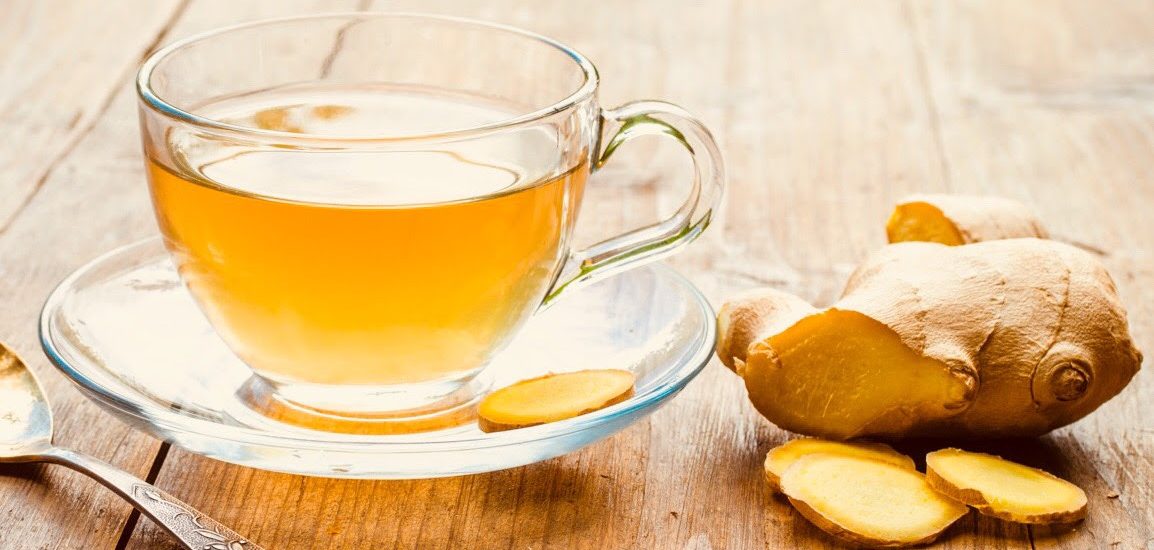Ever had real, fresh ginger tea? It’s soothing and invigorating at the same time. Ginger tea has been consumed for centuries, and yet it has only recently crossed my radar. I love it!
I’ve been drinking ginger tea because I enjoy fresh ginger flavor, but it has a lot more going for it than flavor alone.
All in all, fresh ginger tea recipe is an excellent drink to keep in your repertoire this winter. Ready to make some?
Uses for Ginger Tea
Ginger tea is a warming drink for cool weather. It’s a nice morning or afternoon pick-me-up, yet also a relaxing evening sipper. If you’re in the mood for a seasonal drink that isn’t heavy like hot chocolate can be, try ginger tea!
Ginger tea is a non-alcoholic, non-caffeinated, and virtually calorie-free drink (unless you add a sweetener). So, it’s a great option if you’re cutting back on any of the above.
Ginger tea aids digestion, helps soothe upset stomachs, and can reduce nausea. It might offer some relief to women with morning sickness as well. According to registered dietitian Lily Nichols (affiliate link/don’t get any big ideas), “Ginger is the most well-studied herb used during pregnancy, and has been proven effective in the treatment of nausea and vomiting. Ginger has been used for centuries to reduce nausea and is the only herb that is almost universally considered safe by conventional standards… ginger ale or ginger sodas usually don’t have enough actual ginger to be effective.”
Please remember that I am not a doctor. Consult a doctor if you have concerns about ginger tea.
How to Make Ginger Tea
I tried several ginger tea methods, and the easiest way is truly the best way. Here’s how to do it:
- Thinly slice your fresh ginger. You don’t need to peel it first, but do rinse it and scrub off any visible dirt. Plan on about using about a one-inch piece of ginger per cup of tea.
- In a saucepan, combine the ginger with fresh water (use one cup of water per serving).
- Bring the mixture to a boil over high heat. Reduce the heat as necessary to maintain a gentle simmer.
- Simmer for five minutes (or up to 10 minutes, if you want extra-strong tea). I usually think it’s pungent enough at five minutes.
- Pour the tea through a fine sieve to catch all of the ginger. If desired, serve your tea with a thin round of lemon or orange for some complementary acidity. You might also appreciate a light drizzle of honey or maple syrup, which will temper the fiery ginger flavor.
Ginger Tea Variations
Want to change up your plain ginger tea? Here are a few easy variations.
Ginger-Cinnamon Tea
For more warming spice, simply add a cinnamon stick to your tea before bringing to a simmer.
Ginger-Turmeric Tea
Turmeric offers additional anti-inflammatory benefits, plus a fun orangey hue and extra-spicy, intriguing flavor. Treat fresh turmeric the same way that you treat fresh ginger—cut it into thin slices, and add it to your ginger and water mixture.
Ginger-Mint Tea
Fresh mint lends a cooling component, which helps balance the warmth of fresh ginger. Add a few sprigs of fresh mint to your mixture before bringing it to a simmer.
Ginger Hot Toddy
Now we’re talking. Add fresh ginger to the water when you make my hot toddy recipe.
reshared from cookieandkate.com

